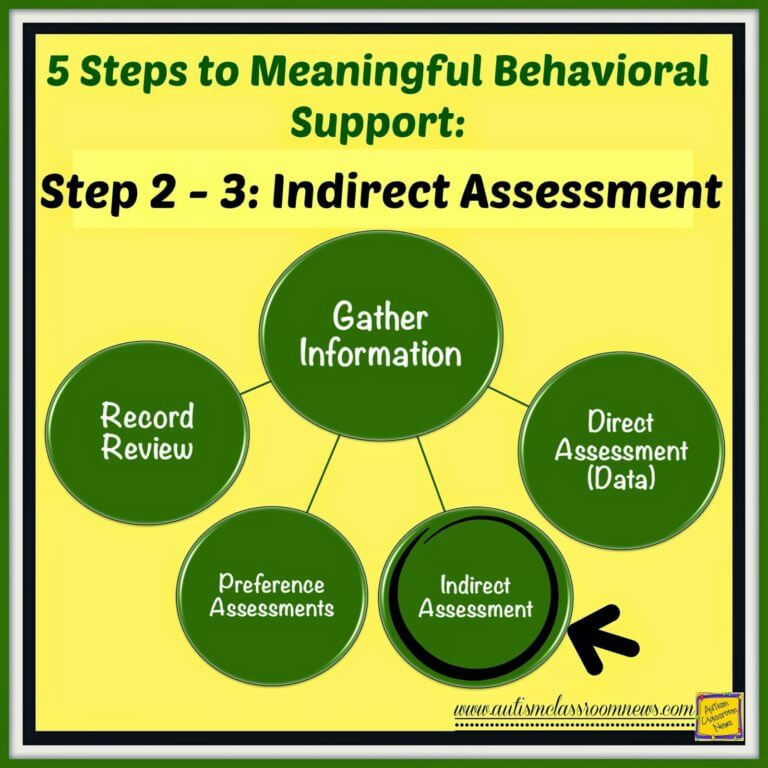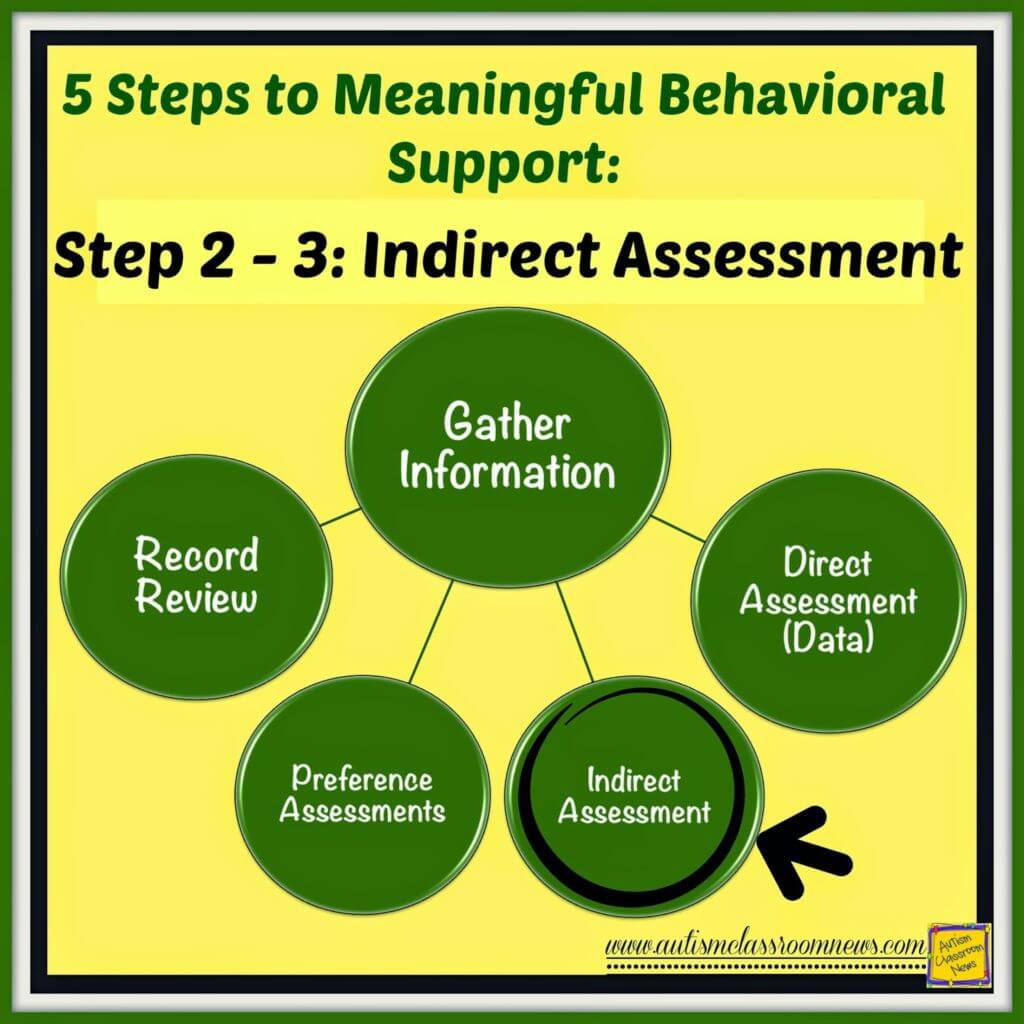To see the other posts in this series click HERE.
collect information from those around the individual who is demonstrating
challenging behavior. We can do this in
a variety of ways using a variety of methods.
A large variety of questionnaire’s / checklists have been developed over
the years that attempt to ask questions about the behavior and have informants
rate specific elements (e.g., does this behavior occur when the individual is
alone? or Is this behavior likely to occur when there is a demand placed on the
student?). Some have the informant rate
the estimated frequency that one of the actions would result
in challenging behavior. Sometimes it is just yes or no questions. People that complete the checklists might be teachers, parents, paraprofessionals, related service providers, or anyone who can provide information about the student’s behavior, including at times the student.
Strengths / Positives
1. They are easy to administer and they don’t take much time
2. They provide context
3. We can develop some initial hypotheses of the functions of behavior from them
4. They tell you something about the reporter
Interviews, in particular, can often tell you more about the person doing the reporting than the individual with the challenging behavior. This is important because you have to factor that into the equation. If the person is displaying significant anger toward the student you are assessing, that tells you something about the context of the behavior. If the person indicates that the behavior is not that big a deal, that tells something else. I once interviewed a student about his own behavior and the way he said things was more informative than the information he provided. When I asked him why it might be helpful for his teachers to like him (a question tailored specifically to him), he replied “Because that is the grease that makes the world go round.” Interesting answer but it doesn’t answer the question. However, it does tell me that he doesn’t have a clear understanding on that hidden curriculum item of why having your teachers like you might be helpful. Similarly I had another student who was completing a self-checklist about his own behavior but refused to fill it out because he wasn’t supposed to share personal information with strangers. The back and forth we went through, which ended up with us destroying the checklist form so I couldn’t see the answers he had written and erased (and him asking if we were going to throw it out why did we have to do it in the first place), was much more informative to me about his behavior than any of his answers could have been.
Weaknesses / Negatives
1. Depend on the reliability of the reporter
When you ask someone to tell you about something you are seeing things not through their eyes but through their perceptions, memory and possible bias. You are seeing their version and their memory of how things occur. Consequently indirect assessment, because it asks someone to tell you about something that happened, is very susceptible to bias and bad memory. Trying to remember something is bad enough. Trying to remember something when the question is asked in a certain way is even more difficult. If you are interviewing me or I am completing a checklist, you have the bias I bring to the interview about why the behavior is happening. I might tell you that the kid is just mean or that he ALWAYS has problem behavior during PE. I might tell you that he never has problems with me but he always does with the other paraprofessional. Observational data may prove both of these statements wrong. They are my perceptions and you can substitute them for real-time observations.
2. Indirect assessments historically have a low reliability and validity
Their reliability, particularly for checklists can be as low as 50%. That’s basically chance for some of these measures. It doesn’t mean they aren’t useful, just that we need to be very careful about relying on their information. Generally, if the interview is conducted by someone with experience with interviewing people about behavior, interviews may be more reliable because you can probe answers in a way you can’t with a checklist. However, because everything comes with bias, we have to be careful in our interpretation.
3. They don’t give us definitive hypotheses
Indirect assessment, because we aren’t manipulating and observing something, don’t give us what we refer to as a functional relationship. We can’t say for sure that giving him a math problem CAUSES or TRIGGERS (careful how you use those words) challenging behavior. We can say that it’s possible, but without observing a direct demonstration repeatedly, we can’t say this is a definite relationship.
So this post has gone on long enough and gives an overview of indirect assessment. I will pick up with some descriptions and links to indirect assessment resources and what we know about them next time. Until then, how do you use indirect assessment with your students?
Until next time,








